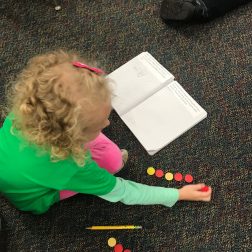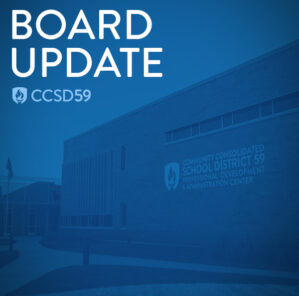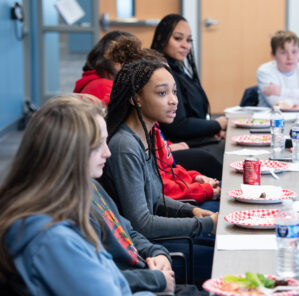Cognitively Guided InstructionCognitively Guided Instruction
What is CGI?
Recently you may have heard your child or your child’s teacher refer to CGI problems in math and wondered what exactly does that mean. CGI, or Cognitively Guided Instruction is an approach to teaching mathematics not a curriculum program. At its very core is the practice of listening to the child’s mathematical thinking and using that information to guide instruction. One of the tenets of CGI is that there is no one way of implementing the practice into a classroom.
Origin of CGI:



Cognitively guided instruction is based on the research out of the University of Wisconsin in the 1990’s by Thomas Carpenter, Elizabeth Fennema, Megan Franke, Linda Levi, and Susan Empson. The research investigated how students solve word problems without receiving direct instruction from the teacher beforehand. In other words, students use their own intuition and understood strategies to solve word problems in a way that made sense to them. Here are a few books that help to explain the developmental learning trajectories for solving story problems with the unknown is a variety of different locations in the problem. By solving these types of problems, students build a strong foundation for algebraic thinking and sense making.
CGI at Forest View
Teachers at Forest View are using cognitively guided instruction in their classrooms. They are launching lessons with story problems and using story problems at the guided math table. Teachers have students share their mathematical thinking with the class so that students work on metacognition and articulating their solution strategies. Students listen and analyze the mathematical thinking of their classmates and determine if the strategies are alike or different than the strategies they themselves used. Students seek to understand the strategies being utilized by their classmates and ask questions to further their own understanding as needed. Students express their problem solving using concrete, representational and abstract methods. 


What is CGI?
Recently you may have heard your child or your child’s teacher refer to CGI problems in math and wondered what exactly does that mean. CGI, or Cognitively Guided Instruction is an approach to teaching mathematics not a curriculum program. At its very core is the practice of listening to the child’s mathematical thinking and using that information to guide instruction. One of the tenets of CGI is that there is no one way of implementing the practice into a classroom.
Origin of CGI:



Cognitively guided instruction is based on the research out of the University of Wisconsin in the 1990’s by Thomas Carpenter, Elizabeth Fennema, Megan Franke, Linda Levi, and Susan Empson. The research investigated how students solve word problems without receiving direct instruction from the teacher beforehand. In other words, students use their own intuition and understood strategies to solve word problems in a way that made sense to them. Here are a few books that help to explain the developmental learning trajectories for solving story problems with the unknown is a variety of different locations in the problem. By solving these types of problems, students build a strong foundation for algebraic thinking and sense making.
CGI at Forest View
Teachers at Forest View are using cognitively guided instruction in their classrooms. They are launching lessons with story problems and using story problems at the guided math table. Teachers have students share their mathematical thinking with the class so that students work on metacognition and articulating their solution strategies. Students listen and analyze the mathematical thinking of their classmates and determine if the strategies are alike or different than the strategies they themselves used. Students seek to understand the strategies being utilized by their classmates and ask questions to further their own understanding as needed. Students express their problem solving using concrete, representational and abstract methods. 





